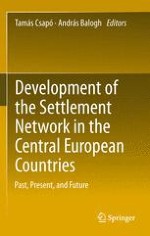2012 | OriginalPaper | Chapter
Urban Restructuring in the Grip of Capital and Politics: Gentrification in East-Central Europe
Authors : Erika Nagy, Judit Timár
Published in: Development of the Settlement Network in the Central European Countries
Publisher: Springer Berlin Heidelberg
Activate our intelligent search to find suitable subject content or patents.
Select sections of text to find matching patents with Artificial Intelligence. powered by
Select sections of text to find additional relevant content using AI-assisted search. powered by
